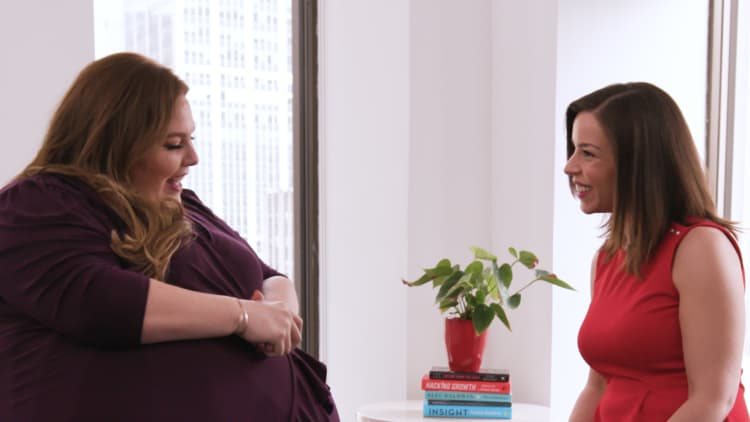There are many things that set us back financially in life: Debt, loans, taxes, living expenses...the list goes on and on. All of this makes it incredibly hard to save money. And given that 60 percent of American millennials don't even have enough in their savings to cover a $1,000 emergency, it should be a top priority for everyone.
But it's the little changes (that most people don't even think of) that can lead to the biggest impact.
Even if you're already practicing healthy financial habits, it's worth considering these eight simple money-saving tips that can help eliminate budget-busters and potentially add thousands back into your pocket:
1. Brew your own coffee
Potential annual savings: Up to $960
The average American spends $1,100 every year (or $3 per day) on coffee, according to a 2017 "Money that Matters" report from Acorns. Even if you take the inexpensive route and swap the $3 latte for a $1.50 cup of joe, your daily caffeine run will still cost you about $540 annually.
Instead, invest in a middle-of-the-road coffee maker and brew your own cup at home. You'll instantly see a change in your savings. To start, go for something that's easy to use, reliable and affordable. You can easily find a decent, 12-cup coffee maker for about $30. The average retail price for roasted coffee beans is around $6 for 300 grams, which can make up to 20 cups of coffee — adding up to about $110 a year.
2. Download store apps
Potential annual savings: Up to $100
"Most people have given up on saving 10 cents here and there by clipping coupons from the newspaper," David Rae, a Los Angeles-based certified financial planner, tells CNBC Make It. He says that you can save "by up to $100 each month by downloading instant coupon apps from your favorite retailers."
Money expert Dave Ramsey agrees that apps can save you a lot of money and time. He also cautions against buying things simply because they're discounted. "Focus only on making purchases you'll actually use," he writes in his blog.
The popular grocery store chain Publix doles out digital coupons that you can't find in the weekly circular. Even better, you can usually stack them on top of in-store promotions and discounts. If you're a frequent Kohl's shopper, you can get 50 free rewards points just for downloading their app. Other helpful apps include Ibotta and Shopkick, which aggregate deals are rewards from nearby stores.
3. Use a programmable thermostat (and unplug devices)
Potential annual savings: Up to $412
If you're one to rack up on energy bills, you'll benefit from using a programmable thermostat, which automatically turns off your cooling or heating system when no one is home.
The typical U.S. family spends an average of $2,060 per year on utility bills, according to the U.S. Department of Energy. So depending on how advanced your programmable thermostat is, you can save anywhere from 10 to 30 percent on those bills.
Similarly, keeping your computer powered up all day long will cost you roughly $75 per year. Consumer savings expert Andrea Woroch suggests connecting your devices to a power strip so you can easily switch them on and off. Set-top cable boxes are also major energy guzzlers (two-thirds of the power they eat up is from sitting idle).
4. Shop at secondhand stores
Potential annual savings: Up to $2,420
You could save up to $2,420 per year shopping secondhand, according to a 2018 resale report from fashion resale website thredUP.

"Buying stuff secondhand will cost you just a fraction of a brand new item would cost. You can also offset the cost by selling things you no longer need or use," Woroch tells CNBC Make It. She suggests looking into platforms like Facebook Marketplace, Poshmark and The RealReal.
5. Cancel unused subscriptions
Potential annual savings: Up to $480
A 2018 report from Waterstone Management Group surveyed 2,500 Americans and found that 84 percent of grossly underestimated their monthly tech and entertainment subscriptions.
Another report found that nearly one in 10 millennials spend an average of $200 per month on subscription services like Spotify, Hulu, Netflix, iTunes and Apple Music. Recurring purchases — from the free trial you forgot to cancel to the Birchbox membership you're still paying for, but never use — can eat up a sizable chunk of your income.
By cutting back on just 20 percent of that monthly $200 (which is a pretty conservative amount), you could save $480 a year. Make it a point to review your monthly bank statements or take advantage of apps like Trim and Truebill to identify and cancel any unwanted subscriptions.
6. Flex your negotiation muscles
Potential annual savings: Up to $275
Ask and you shall receive. A 2018 Comparecards.com survey of 1,051 cardholders found that only 25 percent have called their credit card company to negotiate annual percentage rates (APR). About 64 percent of those who asked reported an average rate reduction of 5.5 percentage points.
That means, for a card with a $5,000 balance, reducing an APR from 24.9 percent to 19.4 percent results in an annual savings of around $275. This strategy also applies to bills, such as your satellite radio subscription or phone bill.
"I got a 30 percent discount on my cable bill just by picking up the phone and asking," says Rae. "If you have more than one TV, you may be paying $7 to $10 per cable box, so getting rid of one or two could save you $15 or $20 each month."
7. Price match your purchases
Potential annual savings: Up to $360
It's impossible to time our purchases to line up with every sale. But many retailers actually offer price adjustments if you buy something that drops in price soon after.
"Prices on everyday items are going to fluctuate throughout the day, week and month — especially online," says Woroch. Apps like Paribus take the legwork out of snagging price matches. It keeps track of your online purchases, then alerts you if something goes on sale within a retailer's price-adjustment window.
Depending on what items you do a price match on, Woroch said it's possible to save up to $30 a month without having to do much work. Some stores, like Best Buy, offer price match guarantees. If you're unsure about a store's price matching policy, it helps to just pick up the phone and ask.
8. Refinance high-interest loans
Potential annual savings: Up to $3,567
Student debt can be a major wealth killer. The interest rate for federal Direct PLUS Loans currently comes in at 7.6 percent. And as of September 2018, interest rates for private loans have gone up to as much as 14.24 percent.
But if you have a solid credit score and reliable income, you may be able to refinance your student loans, auto loans or mortgage at a lower rate — potentially saving you thousands in the process.
Let's say you owe $20,000 in student loans with an average interest rate of seven percent. Refinancing to a 10-year, four percent loan would save you $3,567 in interest charges.
The bottom line
Cutting financial corners doesn't have to be painful. Rae suggests beginning with a quick audit of your spending to get a firm grasp on where your money is actually going. Some easy-to-cut expenses may jump out at you right away. From there, try to negotiate any bills you can't live without.
Once you've completed those steps, start implementing smart shopping habits. The more you save, the more you'll have left over for what matters to you most.
Marianne Hayes is a freelance writer covering everything from personal finance to spiritual growth. Her work has been published in MagnifyMoney, Cosmopolitan, Redbook, Good Housekeeping and Forbes. Follow her on Twitter @hayesmarianne.
Like this story? Subscribe to CNBC Make It on YouTube!
Don't miss:



